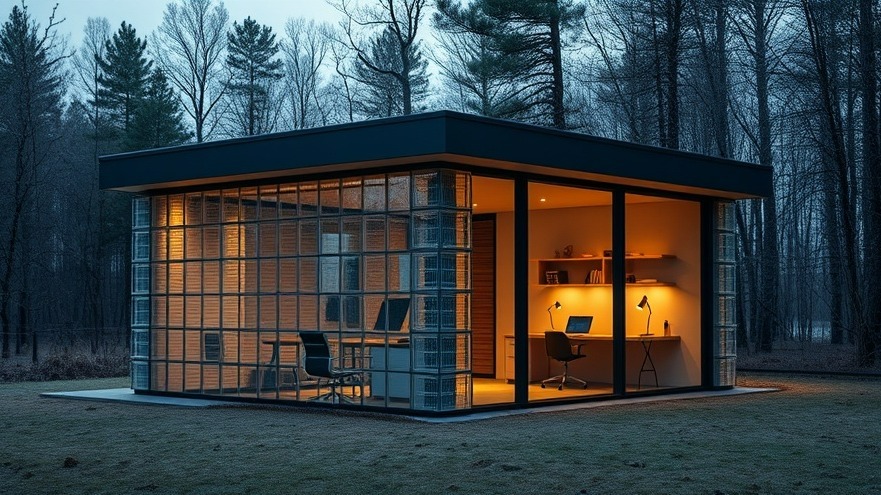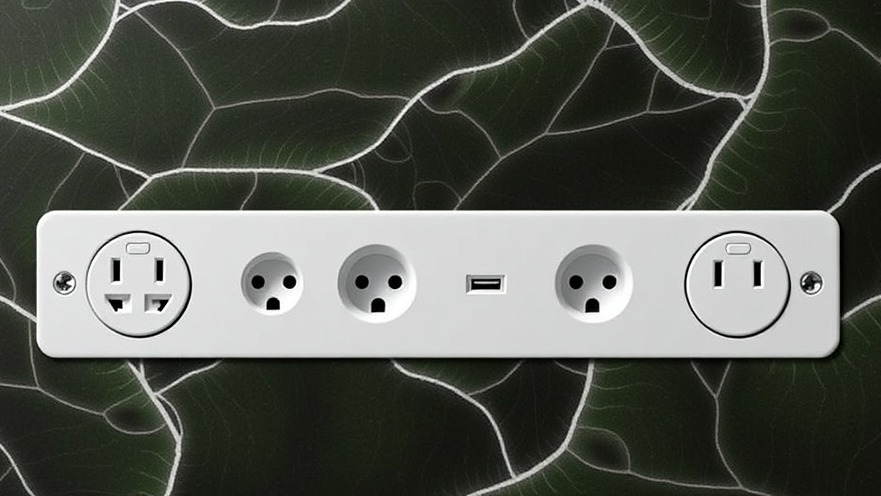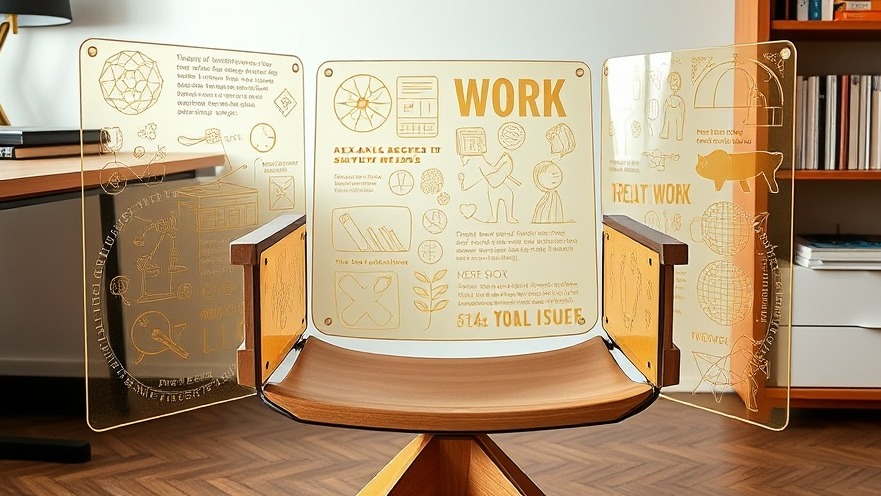
Discovering Light: The Rise of Glass-Brick Facades
In the realm of modern architecture, the innovative use of materials can transform a mundane structure into a luminous living space. A recent example of this is the stunning glass-brick facade of a home designed by Delmulle Delmulle Architecten in Belgium. This unique design doesn’t just serve an aesthetic purpose; it also dramatically enhances the atmosphere of the interior, making it a haven for digital nomads seeking inspiring and efficient remote workspaces.
Why Glass-Brick? The Functions Beyond Aesthetics
The charm of the glass-brick design is that it merges durability with beauty. These bricks are made of thick, hollow glass, allowing natural light to penetrate deeply into the home without sacrificing privacy or security. For remote workers, a well-lit workspace is crucial; studies indicate that exposure to natural light can enhance mood, increase productivity, and improve overall well-being. The prevalence of glass in the workplace can thus frame an optimistic environment suitable for creativity and concentration.
Creating Ergonomic Spaces: The Integration of Functionality
A glass-brick facade is not merely for show. As an ergonomics specialist, I recognize how important it is to design spaces that cater to the physical and mental needs of residents. The natural light flowing through the glass-brick walls reduces the need for artificial lighting during the day, minimizing eye strain - a critical factor for anyone spending long hours in front of a computer screen. Moreover, the unique aesthetic can invigorate one's workspace, fostering an atmosphere of inspiration and creativity.
Balancing Structure and Environment
Emphasizing eco-friendliness in design, the glass-brick house minimizes energy consumption. These bricks are thermal insulators, which can help maintain a comfortable indoor temperature, reducing reliance on heating and cooling systems. For digital nomads, this sustainable approach is not only important for the environment but also for long-term cost savings, enabling a more mindful way of living and working.
Future Insights: Where Architecture Meets Remote Work
As more professionals embrace remote work, the architectural landscape must adapt to these new lifestyles. Homes designed with ergonomic principles in mind, such as the Delmulle Delmulle project, demonstrate an understanding of what a productive workspace should encompass. This trend will likely lead to developments that prioritize natural light, ergonomic furniture, and multifunctional spaces, ultimately facilitating a healthier work-life balance.
Inspiration for Your Own Workspace
Integrating elements from the glass-brick design into your workspace can improve your daily productivity. Consider adding natural light sources, such as skylights or large windows, to your home office. Additionally, an ergonomic chair and desk setup can enhance comfort, allowing for longer and more focused work sessions. Observing how architecture influences your environment can radically alter your work habits and overall satisfaction.
Conclusion: A Call to Action for Remote Workers
As telecommuting continues to rise, it’s essential to prioritize an ergonomic workspace that nourishes mental and physical health. The glass-brick home by Delmulle Delmulle Architecten symbolizes a future where functional aesthetics meet the needs of modern living. Embrace design principles that promote well-being in your remote work environment, and take the time to evaluate how your workspace influences your productivity and creativity.
 Add Row
Add Row  Add
Add 




Write A Comment